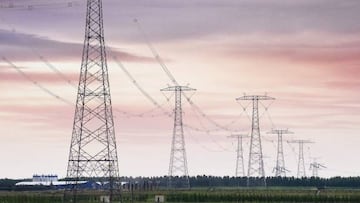Can America’s outdated power grid keep up with high demand this summer?
The federal government is predicting higher than average temperatures across the US which could push the energy grid to its maximum capacity.

Meteorologists are predicting a hotter and drier summer this year, thanks to the La Nina, which will also bring a similar weather pattern to Europe. La Nina, similar to the more common El Niño, is an oceanic and atmospheric phenomenon that can last up to five months. According to the National Oceanic and Atmospheric Administration (NOAA), a La Nina can bring stronger “trade winds [...] than usual, pushing more warm water toward Asia.”
Both La Nina and El Nino impact the various regions of the United States. During a La Nina, which occurs roughly every two years, the West Coast tends to see “upwelling increases, bringing cold, nutrient-rich water to the surface.” This affects the jetstream, which moves across the continental US and usually leads to “drought in the southern U.S. and heavy rains and flooding in the Pacific Northwest.”
NOAA has released their hurricane season prediction, which shows a “65% chance of an above-normal season, a 25% chance of a near-normal season and a 10% chance of a below-normal season.”
NOAA has also predicted that the US may experience higher than average temperatures this summer. Some states have already experienced warmer weather than what is typical for this point in the spring. NPR released a comprehensive list of cities that broke records this weekend, including San Antonio, Texas, which reached 101 degrees, an increase of three degrees from the previous record set in 1939.
Based on the most recent weather forecasts for June released by NOAA, much of the United States, aside from New England and all states along the Canada-US border, are expected to see warmer than average temperatures.
When looking at predictions for the rest of the summer, nearly all states will be impacted by higher temperates.
This may be especially troubling for the western portion of the country, which climate scientists say has been experiencing a megadrought since the beginning of this century; representing the driest period in what many experts believe to be the last 1,200 years. Additionally, officials in California are especially troubled after 2022, so far, has made history as the driest year on record. All of these conditions pose serious issues for California and surrounding states as the country enters fire season.
Could a major blackout occur this summer?
This brings severe concerns over the country’s energy system and whether or not it will be able to handle increased use as people power up their air conditioners to stay cool. One report published by the North American Electric Liability Corporation (NERC) has warned that some states, particularly those in the west and Midwest. In a statement released by NERC that “several parts of North America are at elevated or high risk of energy shortfalls this summer due to predicted above-normal temperatures and drought conditions over the western half of the United States and Canada.” It is important that as this news comes out, states take meausres to bolster their energy supply in case temperatures rise and electricty demand increases rapidly.
However, an additional challenge facing public health experts is how quickly the weather patterns are changing, especially in places that have historically had a more temperate climate. Last year, the Pacific Northwest experienced a historic heatwave that took the lives of more than one hundred people, many of which did not have access to a colling system in their homes.






